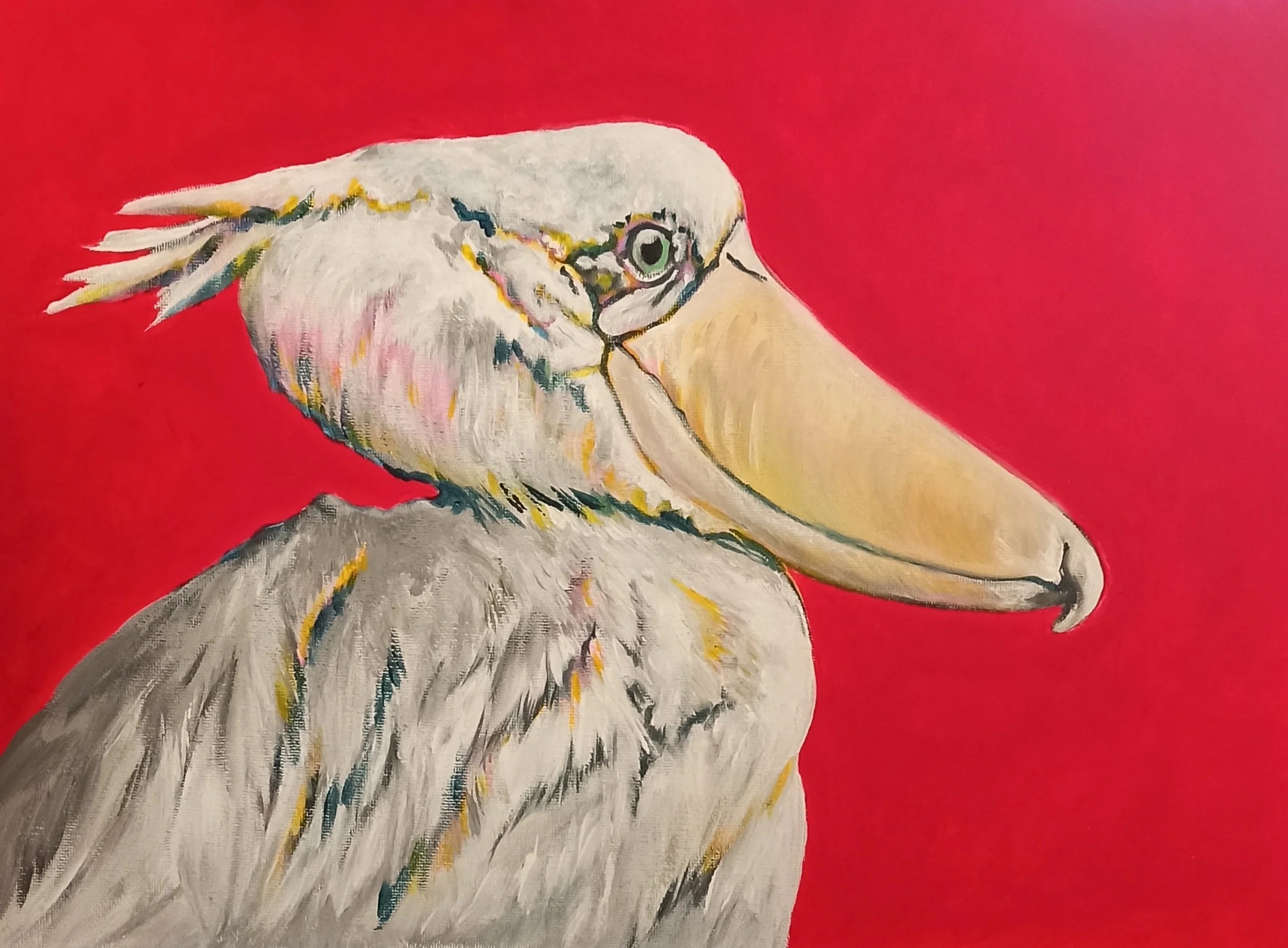But why?
It is because I love capturing the image of shoebills. One minute they will look all cute and fluffy, and the next quite terrifying.
Shoebill storks (Balaeniceps rex) are unusual birds, native to Africa (Sudan, Rwanda, Uganda and Zambia). The global population is currently estimated at between 5,000-8,000 birds and the species is classed as Vulnerable by the IUCN Red List of Threatened Species.
How it all started
The first time I saw one (on a 2017 BBC programme called “Curious Creatures”) I thought I was looking at a Jim Henson creation. It seemed unreal, which was fascinating. That is when I started looking for pictures, and it was not long after that I started to draw them.
That was a few years ago, and I have not stopped.
My fascination stems from the combination of fluffy cuteness and imposing scariness, all in one animal. They are quite solitary, or part of a couple (one chick at a time). Males and females look identical: no one having superb plumage and musicality and the other looking quietly dowdy nonsense for my shoebills. The males may be a slightly taller version of the females, but really the only way to know for definite whether the shoebill is a boy or a girl, is through a DNA test.
They are supremely patient: they will fool you into thinking they are a statue/not there until they suddenly strike at their prey. It all adds to the appeal, it really does.
A shortage of shoebills
Sadly, there are not a great many shoebills left. Through loss of habitat they are slowly being driven out of their territory. They are also quite valuable, which is not a good quality to have if you are a wild animal, as you will make all sorts of people see dollar signs.
There are a few birds in zoos around the world, but not many. You must be really lucky to be living near a zoo that keeps shoebills.
Being kept in a zoo is not ideal, and there have only been two instances where a shoebill couple have managed to reproduce in captivity (that I have been able to find out about). However, seeing one or more shoebills is quite an experience. In the zoo where I have seen them in real life ( Pairi Daiza in Belgium), there is one enclosure where the birds can walk right up to the fence by a small picnic area. It is a fantastic place to sit and watch the shoebills, patiently.
You have to be patient when watching shoebills
The reason watching shoebills requires patience is that they can remain immobile, and seemingly immovable, for quite some time. I heard a few people dismiss them as statues as they hurried past (the people, not the shoebills).
After a while, one of the shoebills decided to watch us in return. He/she came right up to the fence and took his/her time to closely study everybody on the people side of the fence. That was after he/she had made it clear that they did not appreciate the company of one particular gentleman on the people side of the fence. The bird suddenly rushed towards the fence, massive wings spread out, and ready to snap the fence in bits with its massive beak.
It worked: the man left immediately.
The eyes
So being watched by a shoebill is rather impressive, and to be honest, slightly intimidating. It is down to the eyes. They give the bird a look like they know when you will die, and that they may well tell you (like it or not). I love their eyes.
If you ever have the fortune to meet one, make sure you bow. That way they will know that you are greeting them, and that you do not pose a threat.
The feathers
What also makes shoebills look slightly surreal is the colour of their plumage. In the wild, they tend to be a brownish grey. In captivity however, shoebills are closer to fluffy and grey with blue overtones. The small feathers on their heads look more like fur, especially on the back of the head and on their cheeks. They look like they have fluffy cheeks.
Like bluish-grey clouds
